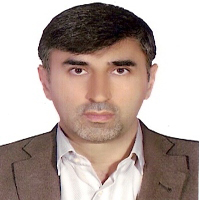Risk Prediction of Leptospirosis by Considering Environmental Factors in Iran Using MAXENT Model
The global burden of leptospirosis as a fatal zoonotic disease is increasing all over the world [1]. As there is not any significant decrease in yearly reported cases trend in Iran and potential spatial distribution of leptospirosis remain unknown in national level, we tried to figure out the geographic distribution pattern of leptospirosis in all parts of Iran. The aim of this study is producing leptospirosis risk map by analyzing relations between disease data reported by the Ministry of Health and nine environmental factors, for a period of 2009 to 2018, using Geospatial Information System (GIS) and Remote Sensing (RS) capabilities and Maximum Entropy (MAXENT) model. Altitude, precipitation, average temperature, maximum temperature, Normalized Difference Vegetation Index (NDVI), land cover, displacement (roads, railways and border entrance points), slope and water areas with 1km * 1km resolution were entered to the model as contributing factors, and patients home locations were used as disease incidence points. ArcGIS 10.6.1 and ENVI 5.3 were used to prepare the nine factors for analysis and interpretation of the results. To create the potential distribution, MAXENT as an ecological niche model was used which is a method that its performance in disease distribution modelling has been proved [2,3]. An advantage of this model is that variables can be either continuous or categorical and can be run for even less than 100 points as incidence data [2]. In this study, 60 percent of disease data was selected randomly for training and other 40 percent was applied as test data. Jackknife manipulation technique was performed to investigate the contribution of each variable in model. Our findings on spatial pattern of leptospirosis at least hint that except north parts of Iran that obviously are most vulnerable areas to the leptospirosis outbreaks, west parts of Iran specially Kermanshah are not safe from the spread of the disease, so health policy makers should consider these areas for monitor and control programs specially after severe rainfall or flood in spring and summer. Jackknife results showed that precipitation and altitude by 43.5 and 37 percent contribution, are the two major factors for risk prediction of leptospirosis. On other hand, maximum temperature, water areas and slope have not meaningful impact on incidence of leptospirosis. Land cover with 11.9%, NDVI with 4%, average temperature with 1.3% and displacement with 1.1% were participated in the model. Also, yearly models have been created for years between 2009 to 2018 to investigate that how parameters contributions change over years. Results showed that the incidence rate was related to altitude around 40% for all these ten years, but precipitation contribution percentage is fluctuating over years. Response curves showed a direct relation between incidence rate of disease and precipitation which means more rainfall causes more incidence. It also showed that altitudes around zero are the most suitable height condition on current distribution of leptospirosis. Also, the landcover output curve showed that Post-flooding or irrigated croplands, artificial surfaces and associated areas, mosaic forests or shrublands and grasslands are the most suitable landcovers for incidence of leptospirosis. To assess the model efficiency, Receiver Operating Characteristic (ROC) was employed. The Area under the Receiver Operating Characteristic Curve (AUC) for training data and test data was 0.956 and 0.955, respectively.
-
Development of an Ensemble Learning Approach for Soybean Yield Prediction using Satellite and Meteorological Data
Ali Sabzali Yameqani*, Aliasghar Alesheikh, Mostafa Majidi
Journal of Geomatics Science and Technology, -
Investigation of Spatio-Temporal Patterns of Suburban Traffic Accidents in Isfahan Province in GIS Environment
M. Rahmati, H. Aghamohammadi *, S. Behzadi, A.A. Alesheikh
Journal of Remote Sensing and Geoinformation Research,


